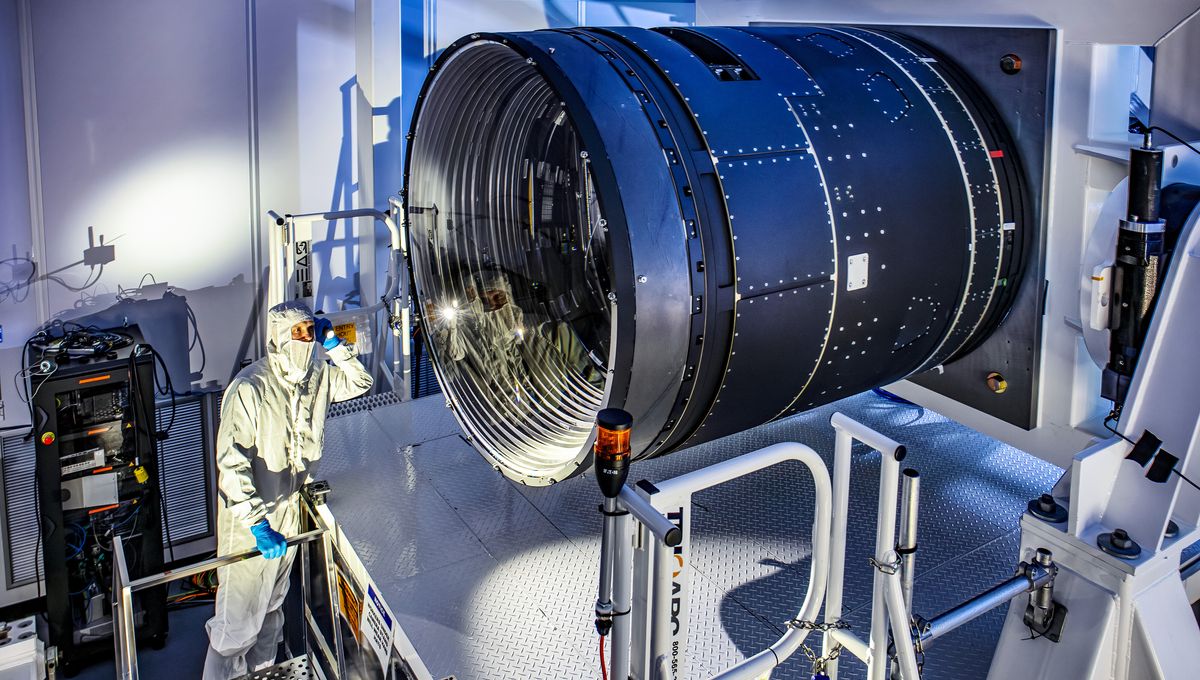
The Legacy Survey of Space and Time (LSST) Camera is now complete. It will soon travel to the Vera C. Rubin Observatory where it will provide an incredible new eye on the southern sky and help us better answer fundamental questions about the nature of dark matter and dark energy.
The LSST camera is a technical marvel. It is 3,200 megapixels and it weighs 3,000 kilograms (6,600 pounds). The images produced by the camera are so large that to screen them properly it would take 378 4K ultra-high-definition televisions in a grid to screen them properly. What a device!
“With the completion of the unique LSST Camera at SLAC and its imminent integration with the rest of Rubin Observatory systems in Chile, we will soon start producing the greatest movie of all time and the most informative map of the night sky ever assembled,” Director of Rubin Observatory Construction and University of Washington professor Željko Ivezić, said in a statement.
The camera itself has two lenses. The first one is 1.5 meters (5 feet) across, making it the largest ever lens constructed for such a purpose. The second one is 90 centimeters (3 feet) wide, which is also not exactly small. Both are custom-designed, and the second one is used to seal the focal plane of the lens, which is kept in a vacuum.
The focal plane is the beating heart of the camera. It is made of 201 CCD sensors – similar to what you find in a usual digital camera – but these are custom-made. Each pixel is 10 microns wide and the focal plane is so flat that its surface doesn’t vary by more than one-tenth of the width of a human hair.
All together, you have a revolutionary resolution.
“Its images are so detailed that it could resolve a golf ball from around 25 kilometers (15 miles) away, while covering a swath of the sky seven times wider than the full Moon. These images, with billions of stars and galaxies, will help unlock the secrets of the Universe,” said SLAC professor and Rubin Observatory Deputy Director and Camera Program Lead Aaron Roodman.
The Rubin Observatory will study how galaxies and clusters of galaxies have changed over billions of years, providing insights into the evolution of galaxies and the distribution of dark matter. It will measure supernovae, providing insights into the expansion of the universe and its cause: dark energy. It will also help study the solar system by spotting never-seen-before asteroids.
The first light for the observatory is expected in January 2025.
Source Link: World’s Largest Ever Digital Camera Is Completed